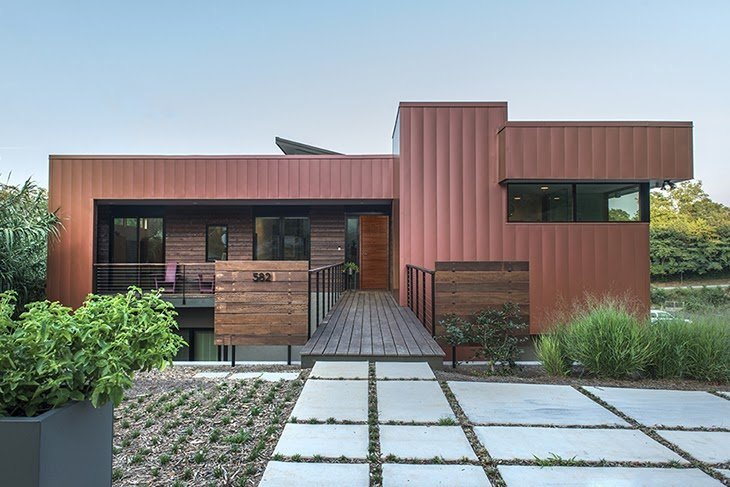Insulated Metal Panels (IMPs) can be used on or in a variety of buildings. Whether your building is residential, commercial, or industrial, IMPs offer numerous benefits. IMPs are easy to install, provide a continuous and strong barrier to outside elements, and can even improve the energy efficiency of your structure. But in order to maximize these benefits, architects and designers must know how to properly design with insulated metal panels. Correctly interfacing the IMPs with the rest of the building is paramount. Check out our IMP design tips below:
Pay Attention To Where The Metal Panels Join Other Materials
Thermal bridging occurs when one material spanning from the exterior of the wall to the interior of the wall is more conductive than the other materials around it. This displacement creates a bridge through the wall’s thermal barrier, allowing for the accelerated flow of heat, leading to condensation and eventually deterioration. How can a designer combat thermal bridging? Paying attention to joint detailing, roof to wall transitions, and transitions from IMPs to other materials.
Choose A Proper Sealant
Sealants are a critical component to the overall IMP system. The exterior metal on the IMP will naturally expand and contract with changes in temperature, which can cause panels to bow and shift. A proper sealant will provide durability and flexibility that help withstand this strain on sealant joints. Design teams should carefully consider the climate, solar exposure, wind exposure, and humidity exposure when selecting sealant joints. The sealant should be able to withstand climatic conditions as well as anticipated structural movement.
Mind The Wall To Roof And Window To Wall Transitions
Windows and doors provide an opening for air and water to get in. It is essential that these openings are properly detailed to prevent exposure to climatic conditions. Design teams and contractors should also pay special attention to wall to roof transitions and other penetration areas, such as vents, security cameras, etc.
In order to make the most of this material, designers and contractors should work closely to ensure the quality and integrity of the IMP system. We hope our tips help! For more information on IMPs, contact our qualified team of professionals at 519-451-7663 or info@ecoinsulatedpanels.com.

